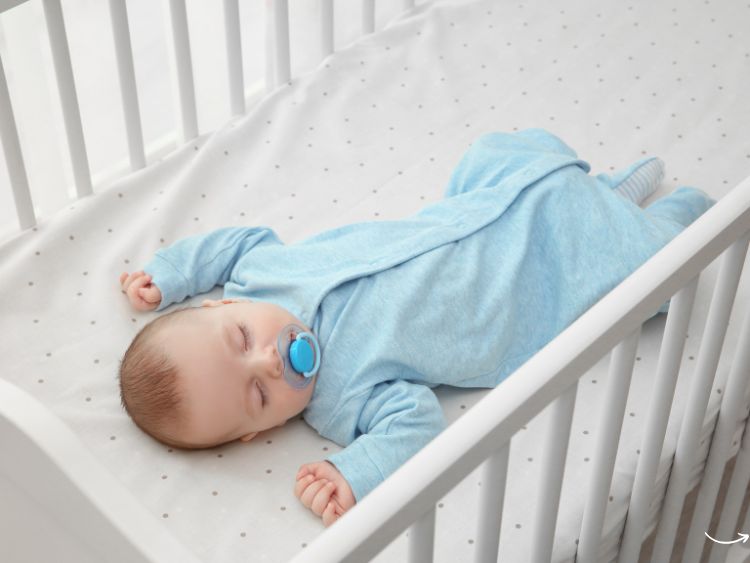When it comes to preparing for a new baby, one of the most important decisions you’ll make is choosing the perfect crib. After all, your little one will spend a significant amount of time there during their first year. From safety standards to style choices, there’s a lot to consider. Don’t fret—we’re here to help break down everything you need to know about selecting the ideal baby crib that ensures both comfort and peace of mind for parents and babies alike.
Why Choosing the Right Baby Crib Matters
Your baby’s crib isn’t just another piece of furniture. It’s the sanctuary where they’ll sleep, dream, and grow. Choosing the right crib ensures safety, supports proper development, and even contributes to their sleeping habits. So, what should you look for?
1. Safety First: Crib Regulations and Standards
Before diving into aesthetics, it’s crucial to focus on safety. The U.S. Consumer Product Safety Commission (CPSC) has strict guidelines for baby cribs to ensure every crib sold meets the highest safety standards.
- Fixed sides only: Cribs with drop-down sides are no longer allowed. Fixed sides provide a sturdier, safer environment.
- Proper mattress fit: The crib mattress should fit snugly within the crib frame to prevent any gaps that could pose a risk.
- Slat spacing: Crib slats should be no more than 2 3/8 inches apart to avoid your baby’s head or body getting stuck.
Look for cribs that have a certification seal from Juvenile Products Manufacturers Association (JPMA), which indicates adherence to safety standards.
2. Types of Baby Cribs
Baby cribs come in various styles to match your lifestyle and space. Here’s a breakdown of the common options:
- Standard cribs: These are full-sized cribs that stay in one spot, offering durability and long-term use.
- Convertible cribs: These are a popular choice as they “grow” with your child, transitioning from a crib to a toddler bed, and even into a full-sized bed.
- Mini cribs: Ideal for small spaces, mini cribs are a compact version of standard cribs and are often portable.
- Portable cribs: These come with wheels, making them easy to move from room to room.
- Travel cribs: Lightweight and foldable, travel cribs are perfect for families on the go.
3. Materials and Durability
When choosing a baby crib, consider the materials. Solid wood cribs tend to be more durable and sustainable. They’re also less likely to have sharp edges or toxic finishes. Opt for cribs made with non-toxic paints and finishes to protect your baby from harmful chemicals.
4. Mattress Matters
A crib is only as good as its mattress. A firm, supportive mattress is essential for safe sleep. Always avoid soft mattresses, as they can increase the risk of suffocation. Look for a mattress that is firm but comfortable and fits the crib perfectly. You can also consider options with dual firmness—one side for infants and a softer side for toddlers.
Key Features to Consider in a Baby Crib
- Adjustable Mattress Height
Many cribs allow you to adjust the mattress height. As your baby grows and becomes more mobile, lowering the mattress height prevents them from climbing out. - Teething Rails
Once your baby starts teething, they’ll inevitably try to chew on everything in sight—including the crib. Teething rails provide a protective cover for the crib’s edges and protect your baby’s teeth. - Convertible Features
If you want a crib that lasts through your child’s early years, opt for a convertible crib. They are more cost-effective in the long run as they grow with your child, transforming into toddler beds and sometimes even full-sized beds. - Eco-Friendly Options
Want to go green? Some cribs are made from sustainable wood and have eco-friendly finishes. Look for certifications like GREENGUARD, which indicates low chemical emissions for better indoor air quality.
Best Baby Crib Designs for Style and Functionality
You don’t have to sacrifice style for safety! Here are some popular designs that blend both form and function:
- Modern Minimalist: Clean lines, neutral colors, and simple designs that fit into any contemporary home.
- Vintage-Inspired: Cribs with ornate detailing or spindle designs for a timeless, classic look.
- Scandinavian Style: Minimalistic, with natural wood finishes that bring a cozy feel to the nursery.
- Convertible and Storage Cribs: Cribs that come with built-in drawers or compartments to save space and keep baby essentials close by.
FAQs About Baby Cribs
- What’s the best time to buy a baby crib?
Most parents begin purchasing baby essentials in the second trimester. However, it’s a good idea to order the crib a few months before your due date to account for delivery and setup time. - How long can my baby sleep in a crib?
Most babies transition from a crib to a toddler bed between 18 months and 3 years, but convertible cribs can extend that timeline considerably. - Should I buy a second-hand crib?
While second-hand cribs might be budget-friendly, be cautious. Older models may not meet current safety standards. Always check for recalls and ensure the crib is in excellent condition. - What is the ideal size for a baby crib?
Standard cribs typically measure 28 inches by 52 inches, while mini cribs are smaller. Ensure the crib fits the space in your nursery, while still providing room for other essentials. - Can I place the crib near a window?
No, it’s safer to place the crib away from windows to avoid drafts, blinds, or cords that may pose strangulation hazards.
Final Thoughts on Choosing a Baby Crib
Finding the right crib doesn’t have to be overwhelming. By focusing on safety, style, and functionality, you’ll be able to choose a crib that your baby will love and that offers peace of mind for you. Keep in mind the importance of materials, adjustability, and convertibility to ensure your purchase grows with your little one.
Once you’ve found the perfect crib, your nursery will truly feel like a welcoming, safe haven for your baby.
Authoritative Sources:
- https://www.jpma.org
- https://www.cpsc.gov/Safety-Education/Safety-Guides/Kids-and-Babies
- https://www.greenguard.org



